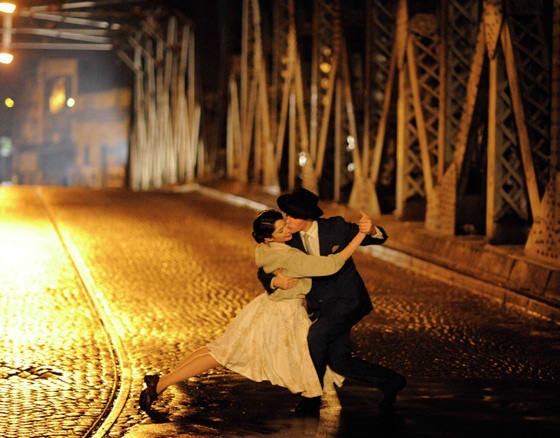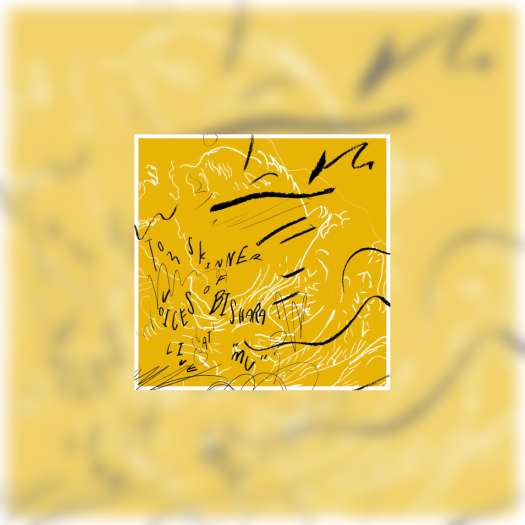Though he was born and raised in Buenos Aires, documentarian German Kral has remained in Germany, where he went to study film back in 1991. Working as an assistant director for Wim Wenders — Our Last Tango is presented by Wenders — before tackling his own feature projects, he's developed an eye for the experimental.
Often making dance and music documentaries within his home country of Argentina, he's been gradually testing the boundaries of the form, inserting drama, re-enactment and self-awareness into his films, which has ultimately culminated in Our Last Tango, a fascinating look at the multi-decade romance between Juan Carlos Copes and Maria Nieves Rego, the famed Argentinean tango duo known mainly (in North America) for their work on Broadway in Tango Argentino.
The overriding framing device for this visually sumptuous documentary is standard subject interviews intended to lead up to the re-teaming of the famed tango due, who have been long estranged. Rego recounts growing up in a poor home, watching her mother pick through garbage to find food to put on the table and the worn outfit she wore to go dancing every day after work. She gushes about her love of the tango, giving a very detailed breakdown of her own gradual understanding of dance and the history of how her abilities expanded, noting chiefly that the only thing she would change about her life is having invested her feelings in her former long-time dance partner and lover, Juan Carlos Copes.
Copes, though less present throughout the doc — he's more stoic and a far less animated speaker — is quite candid about his own faults, even though he doesn't necessarily take responsibility for them. He notes the frequency of his infidelity, candidly noting how confined he felt by the traditional romantic paradigm. And though he complains about Rego, he does opine about how he was never able to replace her in the context of dance.
While this mirroring of tango with a passionate, but deeply flawed, love affair works effectively on its own, Kral also inserts re-enactments to visualize the historical aesthetic and mode of dance being referenced in the interviews. More intriguingly, he inserts the actors performing the dances into the documentary, allowing them to analyze their character motivations and take advice from the dancers they're portraying. It helps inject some objective opinions on the subject, adding extra layers of complexity and analysis to this wildly creative recreation of history.
Beyond having compelling subjects and a constantly inventive, ever-changing look — Kral's colour filters and filming style change with the time periods being discussed, ultimately blending seamlessly with the actual archival footage— Our Last Tango also features an endless array of astonishingly choreographed and executed dancing. Both the archival footage of the documentary subjects and the dancer recreations are highly compelling, adding a kinetic element to what is otherwise a linear documentation of written history.
This blend of styles and the many modes of storytelling — both visual and spoken — that Kral injects in his latest feature make it compelling. Even those unenthused by dance should find some humour in Rego's brutal honesty or some intrigue in the reader-meets-author dynamics of making actors into secondary subjects. There's a little something for everyone here.
(Lailaps Pictures)Often making dance and music documentaries within his home country of Argentina, he's been gradually testing the boundaries of the form, inserting drama, re-enactment and self-awareness into his films, which has ultimately culminated in Our Last Tango, a fascinating look at the multi-decade romance between Juan Carlos Copes and Maria Nieves Rego, the famed Argentinean tango duo known mainly (in North America) for their work on Broadway in Tango Argentino.
The overriding framing device for this visually sumptuous documentary is standard subject interviews intended to lead up to the re-teaming of the famed tango due, who have been long estranged. Rego recounts growing up in a poor home, watching her mother pick through garbage to find food to put on the table and the worn outfit she wore to go dancing every day after work. She gushes about her love of the tango, giving a very detailed breakdown of her own gradual understanding of dance and the history of how her abilities expanded, noting chiefly that the only thing she would change about her life is having invested her feelings in her former long-time dance partner and lover, Juan Carlos Copes.
Copes, though less present throughout the doc — he's more stoic and a far less animated speaker — is quite candid about his own faults, even though he doesn't necessarily take responsibility for them. He notes the frequency of his infidelity, candidly noting how confined he felt by the traditional romantic paradigm. And though he complains about Rego, he does opine about how he was never able to replace her in the context of dance.
While this mirroring of tango with a passionate, but deeply flawed, love affair works effectively on its own, Kral also inserts re-enactments to visualize the historical aesthetic and mode of dance being referenced in the interviews. More intriguingly, he inserts the actors performing the dances into the documentary, allowing them to analyze their character motivations and take advice from the dancers they're portraying. It helps inject some objective opinions on the subject, adding extra layers of complexity and analysis to this wildly creative recreation of history.
Beyond having compelling subjects and a constantly inventive, ever-changing look — Kral's colour filters and filming style change with the time periods being discussed, ultimately blending seamlessly with the actual archival footage— Our Last Tango also features an endless array of astonishingly choreographed and executed dancing. Both the archival footage of the documentary subjects and the dancer recreations are highly compelling, adding a kinetic element to what is otherwise a linear documentation of written history.
This blend of styles and the many modes of storytelling — both visual and spoken — that Kral injects in his latest feature make it compelling. Even those unenthused by dance should find some humour in Rego's brutal honesty or some intrigue in the reader-meets-author dynamics of making actors into secondary subjects. There's a little something for everyone here.




